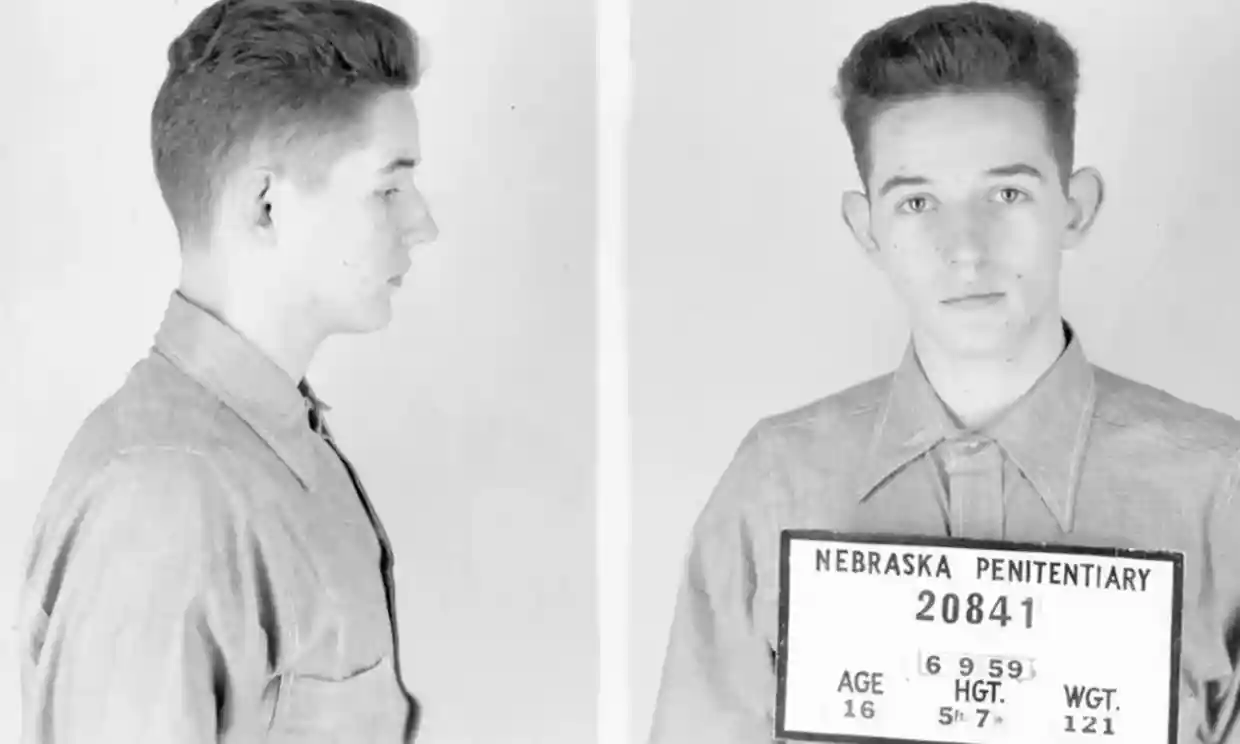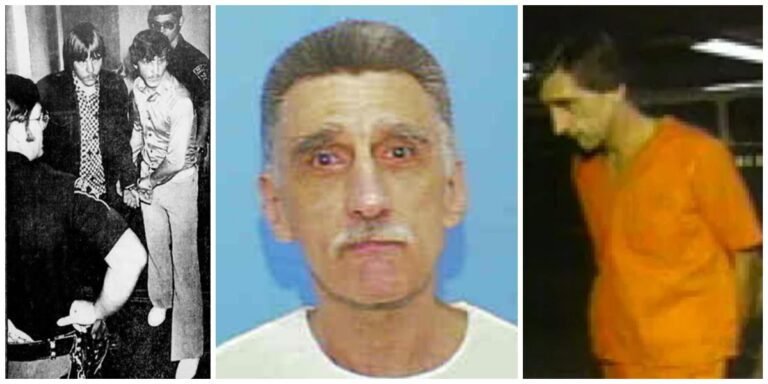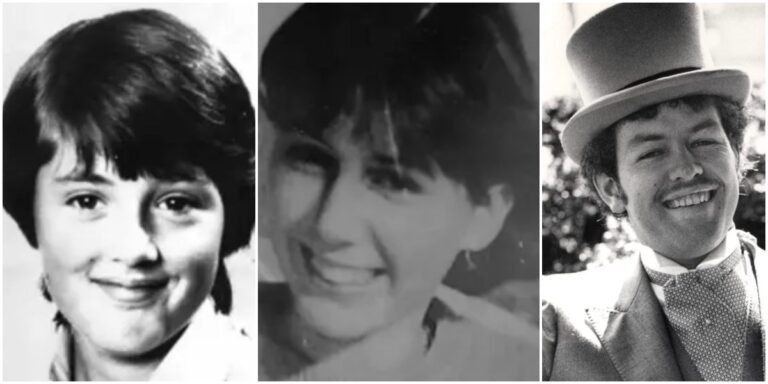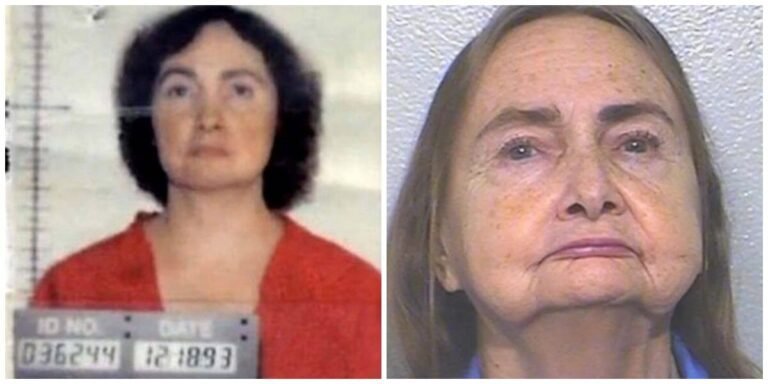Revealed: Australian Family Man’s Dark Past as Teenage Killer and Nebraska Jail Escapee Uncovered through DNA Evidence
In the summer of 1958, William Leslie Arnold, a 16-year-old from Omaha, Nebraska, committed a heinous crime that would send shockwaves throughout the community. Fueled by rage and a desire to impress his girlfriend, Arnold brutally murdered his parents after they refused to lend him the family car to attend a drive-in movie screening of “The Undead.”
For weeks, he masqueraded as a dutiful son, spinning a web of lies to those closest to him. But the truth would eventually catch up with him, and he was soon apprehended, confessing to the gruesome killings and leading authorities to his parents’ makeshift gravesite.
Sentenced to two life terms in the Nebraska state penitentiary, Arnold’s story might have ended there. But fate had other plans.
In 1967, Arnold and fellow inmate James Harding orchestrated one of the most audacious prison breaks in history, using homemade masks to fool guards during daily head counts. From that moment on, he lived life on the run under the alias of John Vincent Damon.
For 50 years, Arnold’s true identity remained hidden, as he married twice and fathered two children. His past, however, was never far behind him, and the long arm of the law eventually caught up with him. His death in Brisbane, Australia, in 2010 marked the end of a twisted and tumultuous life, leaving those who knew him to wonder: Who was William Leslie Arnold, and what drove him to commit such a heinous act?
Arnold’s life on the run was filled with twists and turns, spanning several continents and multiple aliases. Immediately after the prison break, he and Harding split up in Chicago, with Harding being captured within a year. Arnold, however, vanished, marrying and becoming a father within three months. He moved from Miami to California, got divorced, and eventually settled in New Zealand in 1978 before finally moving to Australia, where he worked as a salesman.
For decades, Arnold’s case remained unsolved, with the FBI, Nebraska Department of Corrections, and US Marshals Service all failing to track him down. It wasn’t until 2004 when Geoff Britton of the Nebraska Department of correctional services took on the case, that progress was made. Obsessed with finding Arnold, Britton worked tirelessly on the case for nine years.
In 2020, the case was handed over to Matthew Westover, a deputy marshal in Nebraska, who initially took it as a joke. However, after reading up on the case and researching the details, Westover became convinced that he could solve it.
One factor that caught the attention of investigators was the motive behind Arnold’s crime. While many assumed that his desire to borrow the family car to impress his girlfriend was the sole reason for the murders, Britton and others wondered if there was more to the story. In particular, they questioned Arnold’s relationship with his parents and the possibility of underlying issues.
Despite the sympathetic portrayal of Arnold by reporter Henry Cordes in “The Mystery of Leslie Arnold,” published in the Omaha World-Herald in 2017, the truth behind the murders remained shrouded in mystery for over five decades. But with the hard work and dedication of investigators like Britton and Westover, the truth was finally brought to light.
As the investigation unfolded, Westover and his team worked tirelessly to track down John Damon, aka Leslie Arnold. They discovered that he had lived under various aliases throughout the years and had even managed to acquire a passport using a false identity.
Finally, in February 2021, after decades on the run, Arnold was captured in a small town in northern California. The now 77-year-old was living alone in a modest apartment under the name of Vance Erikson.
Arnold was extradited to Nebraska and charged with two counts of first-degree murder. During his trial, he maintained that he had been pushed to the brink by his parents’ strict rules and that he had acted in self-defense.
However, the jury was not convinced and found him guilty. He was sentenced to life in prison without the possibility of parole.
For the first time in more than three decades, justice had been served for the murders of Robert and Helen Arnold. And as for Arnold’s son, while the truth about his father’s past may have been difficult to swallow, he found solace in the fact that the man responsible for such a heinous crime had finally been brought to justice.
The hunt for fugitives has entered a new phase with the use of commercial genealogy databases to solve cold cases. The case of William Leslie Arnold, who escaped from prison after killing his parents, is a prime example of how DNA matching can lead to unexpected revelations. Arnold’s case was cracked open after his younger brother provided a DNA sample that was uploaded to an ancestry site. Two years later, a match was found, leading to the discovery of Arnold’s son, who had been searching for his biological father.
The use of commercial genealogy databases to track down fugitives has raised concerns about privacy and whether law enforcement should have access to personal genetic information. However, according to genetic genealogist CeCe Moore, the databases can provide valuable information for solving crimes, particularly when law enforcement is unable to find a match in government-linked databases.
The potential for solving cold cases using commercial genealogy databases is vast, with Moore suggesting that the approach could be used to track down the infamous Alcatraz escapees or the missing hijacker DB Cooper. However, the restrictions placed by the big three commercial genealogy databases – AncestryDNA, 23andMe, and MyHeritage – on the use of crime scene or unidentified remains DNA by law enforcement could hinder future investigations.
Despite the troubling beginnings of his life, William Leslie Arnold’s legacy is seen as more than just a terrible crime by his family. According to Arnold’s son, he became the parent he wanted to be, leaving a positive impact on those around him. The fascinating story of Arnold’s life and capture demonstrates the power of DNA matching in solving cold cases and shedding light on the hidden truths of our past.




